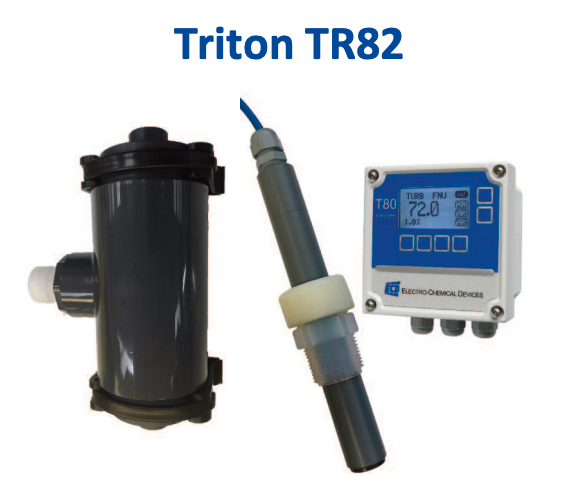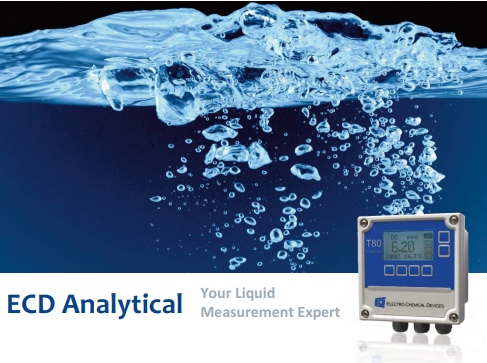Electro-Chemical Devices (ECD) Debuts New Analyzer to Measure Turbidity in Industrial Processes
How do you measure turbidity and why is it important in process industries?
Electro-Chemical Devices (ECD) is a manufacturer of transmitters, analyzers, and a wide variety of liquid-type sensors. The products that ECD makes are used in harsh industries such as oil and gas, wastewater, mining, and power generation. These sensors and transmitters need to be accurate and withstand a variety of different conditions.
Turbidity Meter
A turbidity meter measures the amount of cloudiness in water. The clarity of the water is reduced by tiny particles submerged within the sample. Viruses or bacteria can attach themselves to these particles and essentially hitch a ride.
If these contaminants are spread throughout a drinking water supply system, a lot of damage can be done throughout a community. For this reason, turbidity meters are becoming more popular. Larger particles can cause damage to pumps or other sensitive measuring equipment, so any water system that uses pumps and sensors needs to measure and maintain the turbidity of its water.
The Triton TR82
Recently, ECD launched their latest turbidity meter, the Triton TR82. This style of turbidity meter uses an optical method, meaning the sensor shines an infrared LED light into the sample and measures the amount of scattered light coming back to the optical sensor. The sensor uses what is known as a 90° scattered light method, which means the intensity of the scattered light is measured at a 90° angle to the light source.

The Triton TR82 meter. Image used courtesy of ECD
As more particles enter the sample, less light makes it back to the optical sensor. The wavelength, material size, and composition of the particles will also affect the results. Because the sensor is sensitive to the material make-up, it must be calibrated to report in engineering units. This calibration is done at the factory after manufacturing.
The sensor is typically inserted into a flow-through design but can also be immersed or installed into a gas de-bubbler assembly.

Analytical Your Liquid measurement tool. Image used courtesy of ECD
The sensor comes pre-calibrated, which is stored inside the sensor. The sensor can interface with the T80 transmitter, which ECD also sells. The output of the transmitter has Modbus, HART, 4 to 20 ma, and relay outputs.
With the TR82 being an optical sensor, having a clean surface to detect the scattered light is paramount. The TR82 has been designed with a parallel sensor surface which ensures a self-cleaning surface with moderate flow. The TR82 comes in four different ranges and has an outer diameter of 1”.
Turbidity Uses
Wastewater treatment plants are the first industry that comes to mind that requires accurate measurement of water clarity. As the water is treated, it becomes clearer, the factory needs to ensure their processes are working accordingly, and relying on human visual inspection is not always accurate.

A chart showing how the turbidity meter works. Image used courtesy of ECD
Nuclear power generation uses water to cool the highly reactive material. This water needs to be pumped around the power plant constantly through pipes of varying sizes. If the water becomes contaminated with particles, the nuclear reactive equipment could become damaged. Replacing or fixing this equipment is costly and difficult to reach. Using a turbidity meter such as the TR82 processes can be finely tuned or data collected about the process.
ECD is hopeful that this tool will help engineers with their control operations where turbidity is concerned.

 Facebook
Facebook Google
Google GitHub
GitHub Linkedin
Linkedin








